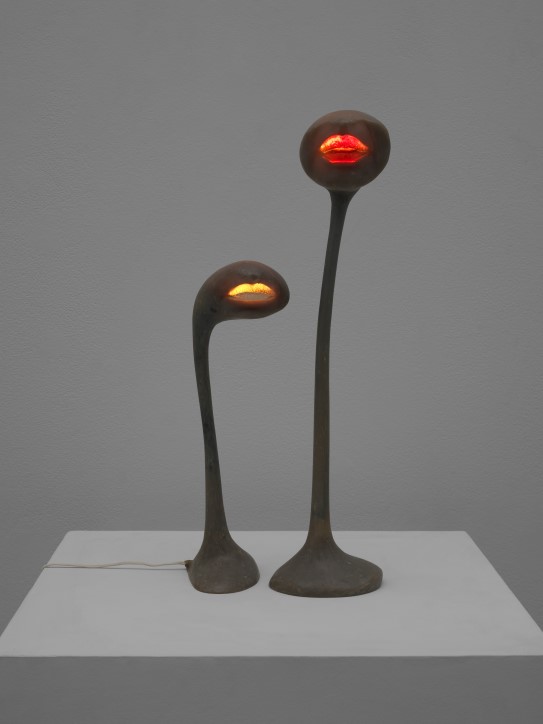
Following an evening with Szapocznikow and her friends, Bourgeois wrote home, invigorated: "Nobody sells; each artist shows to the others. There are very beautiful exhibitions and I am happy to have made the trip".
Szapocznikow introduced Bourgeois to friends, such as Roman Polanski and the polish artists Magdalena Abakanowicz and Zofia Butrymowicz. She also gave Bourgeois two of her colored polyester resin lamps as a present, and Bourgeois returned the gesture of friendship by sending Szapocznikow a gold patina version of her sculpture Sleep (1967–68). The photo of her and her enlarged “sleeping” phallus in Carrara in 1967 might have inspired Szapocznikow to have a photo taken of her working on Big Bellies in 1968.
Latex, clay and passion
It was not only the shared situation of being women sculptors in an almost completely male dominated scene that brought them together, but moreover their interest in similar artistic questions, concretely when it came to materials and techniques as well as content. Bourgeois had experimented with latex and clay in works that were included in Eccentric Abstraction.
